King's Cup - 1928
-
Ragg, Robert Linton
Flt-Lt Robert Linton Ragg CB CBE AFC Later an Air Vice Marshall
-
Rawson, Arthur Harold Charles
Flt-Lt Arthur Harold Charles Rawson b. 7 Sep 1896, Calcutta, India
British Army 1914-16; RAF 1916-21 & 1923-28; RAFO 1928-36
Test pilot (subs Chief Pilot), Cierva Auto-Giro Co, 1928-32
Involved in early helicopter experiments, including a helicopter promotional tour of the UK in Aug 1928, and of Europe (Paris, Brussels, Cologne, Dortmund, Hanover, Berlin & Rotterdam, incl dual with German Ace Ernst Udet), in Oct 1928
co-author,' The Book of the C.19 Autogiro' (1931)
staff pilot for Cobham's Flying Circus in 1932
RAF 1940-41
Died in WWII - 3 Jun 1941, crashed ½m North of Towyn Aerodrome attempting a forced landing after engine failure in Henley III L3284. He and AC2 Sharp were trapped in the aircraft, which burnt out.
Research: thanks to Steve Brew
-
Richardson, Llewellyn George
Lieut Llewellyn George Richardson, RN 
photo: 1930
Royal Navy 1922-1951, but RAF 1925-36
-
Smith, Sydney William
Wing-Cmdr Sydney William Smith 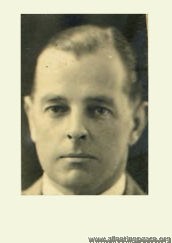 1928, aged 39
1928, aged 39born Burton-on-Trent; later an Air Commodore
-
Soden, Frank Ormond
Flt-Lt Frank Ormond 'Mongoose' Soden DFC  1916, when a Lieutenant in the 8th South Staffordshire Regiment, aged 21
1916, when a Lieutenant in the 8th South Staffordshire Regiment, aged 21b. 3 Nov 1895, Petitcodiac NB, Canada
British Army 1914-16; RAF 1916-1945; WWI ace (27 victories)
Founding Member of the British Parachute Association in 1926
Author of 'Parachutes' (RAeS), Oct 1927
2nd place (Moth G-EBOU, 95½ mph) in Wakefield Light Aeroplane Handicap (£15) & 2nd place (Moth G-EBOU, 95 mph) in President's Cup Race (£15), Hants Air Pageant, Avro Aerodrome, Hamble, 28 May 1928
Station Commander at Biggin Hill in WWII
Later emigrated to Kenya
d. 12 Feb 1961 - London
Research: thanks to Steve Brew
-
Spooner, Winifred Evelyn
Miss Winifred Evelyn Spooner
Royal Aero Club Certificate No. 8137 (11 Aug 1927)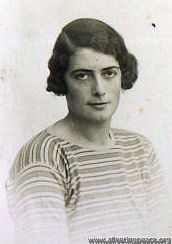 1927, aged 27
1927, aged 27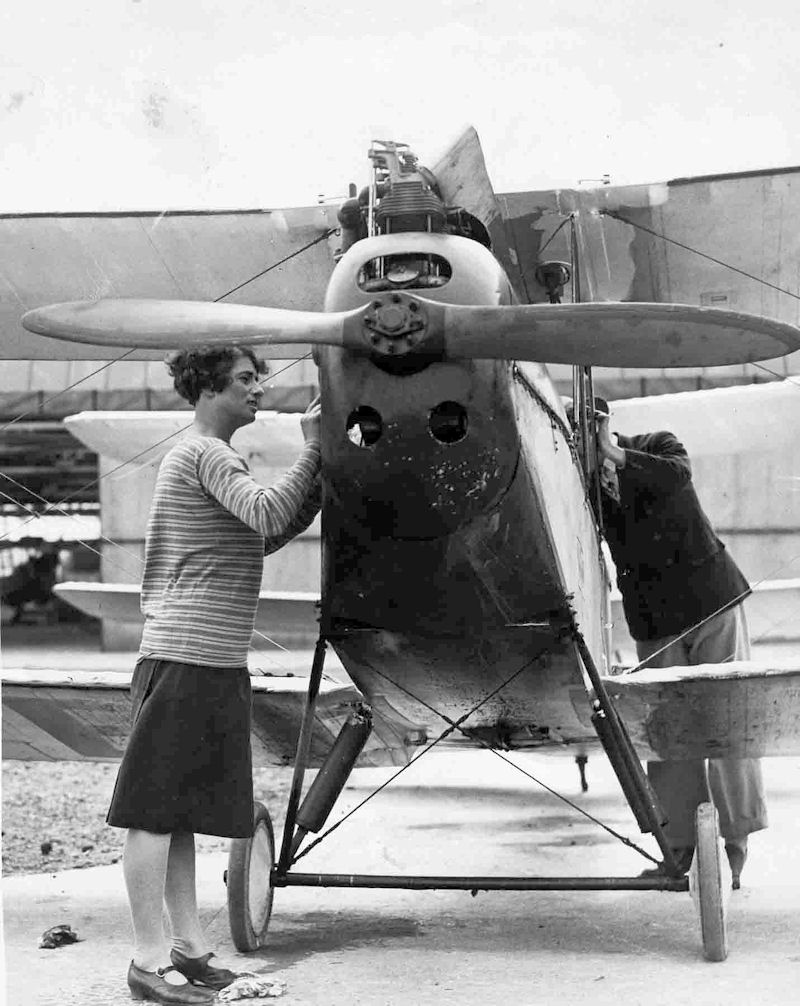
'Bad luck Wimpey' was one of the best-known women aviators of the time, and the one generally regarded as the best. She was awarded the International League of Aviation's Trophy for women aviators in 1929, and in 1930 Capt C D Barnard described her as 'the finest woman pilot in the world' (He went on to say that Lady Bailey was regarded as the 'second finest airwoman in the world', and we don't know what she thought about that...)
Learnt to fly in 1926 and took it 'more seriously than most' - in her first race in April 1928, she won the Suffolk Handicap (21 miles at 78mph), ahead of Neville Stack and four other male rivals; she won the 'heavy' category in the Round Europe Contest for Touring Aircraft in 1930 - covering 4,700 miles at 102mph, ("a very fine performance indeed", said The Times) and also competed in the Ladies event at Reading (May, 1931) - the other competitors were Amy Johnson, Grace Aitken, Pauline Gower, Dorothy Spicer, Susan Slade, Gabrielle Burr, Christina Young, and Fidelia Crossley - a historic gathering indeed.
Photo here
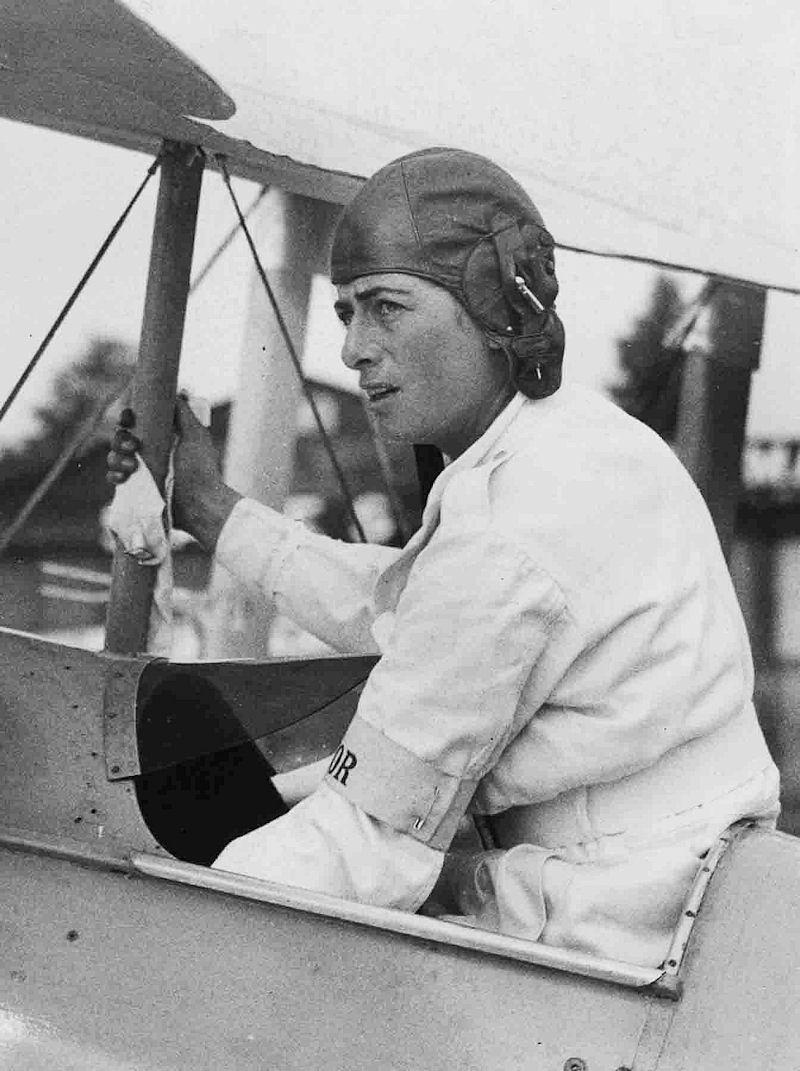
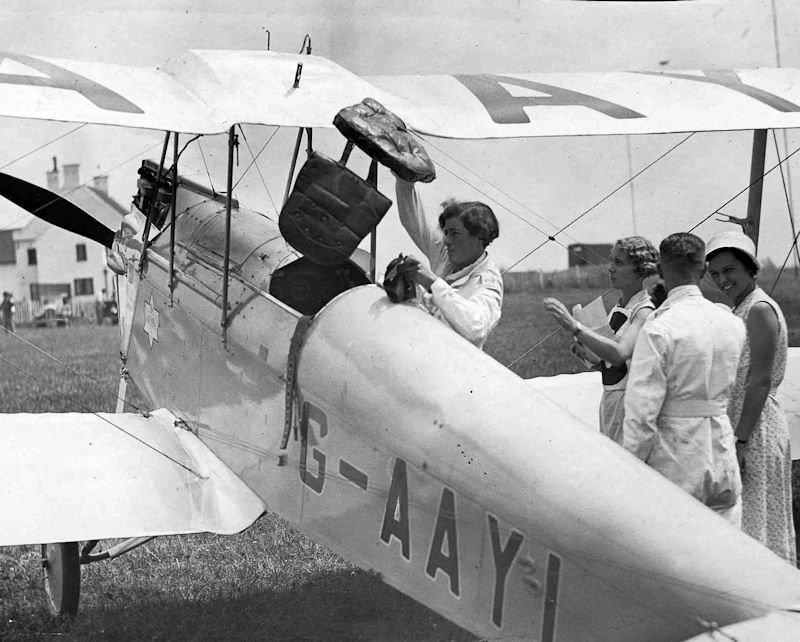
She soon took her 'B' (Commercial) Licence, and at one stage was the only professional woman pilot in the country.
In September 1927 her first flight abroad was to Venice to support the British Team in the Schneider Cup in Venice. Alan Butler (with Peter Hoare as passenger), and Hubert Broad, who took Maia Carberry, also went and, in case you were wondering, "Mrs. Carberry wore a pale blue leather flying helmet to match the colour of her Moth aeroplane."
She soon became regarded as 'one of the few women who matter in the air world'; in March 1928, when King Amanullah of Afghanistan was on a state visit to London, he inspected "the latest types of Imperial Airways passenger machines and a number of small Moth machines in private ownership. He carried on, through an interpreter, an animated conversation with Miss Winifred Brown, of Manchester, and Miss Spooner, of London, both of whom own and fly small two-seater machines."
In the 'Woman's World' section of the Inverness Courier of April 1928, this description of Winifred appeared: "[she] has not flown for very long, for it was only about three years ago that I knew her in Cologne, when she then drove, instead of an aeroplane, a two-seater car, through the crowded streets of Cologne, at a speed which most people would have been terrified to attempt. She was always, however, extremely cool and composed, and though her passengers were sometimes nervous she never seemed so. She was always very sporting, and played an excellent game of tennis. A good-looking, typically English girl, she made many friends among the British army in Cologne when doing voluntary work with the Y.M.C.A. there. [Winifred was with the 'Army of Occupation' in Germany at the time]"
She did have what she later described as her 'greatest air thrill' on Marlborough Common in May 1929; "she had been taking passengers up all day when, after one flight, she said she was not quite satisfied with the controls, and refused to take the next man until she had attended to the aeroplane. After doing so she started the propeller, and as she walked away from it the machine suddenly moved forward. Pluckily, Miss Spooner jumped and caught hold of the wing, her idea being to clamber into the cockpit and stop the engine. The machine quickly gathered speed, and she was dragged 40 or 50 yards [she later reckoned it was about 30 yards], when to the horror of the crowd the plane turned and buried its nose in the ground, hurling Miss Spooner some distance. She was unconscious. Doctors were sent for and she was taken to hospital. 'We thought she must have been killed,' an eye-witness told our representative."
She was taken to Savernake Hospital suffering from a sprained wrist, cuts, and slight concussion.
She does seem to have had quite a few run-ins with the local Constabulary; firstly in January 1929 for failing to keep her Alsatian dog under proper control (it had attacked another dog which "had no chance"), then in August 1929 for failing to produce a car driving licence (she said she had forgotten about it and flew to France the following day); then in 1931, she was fined £35 for leaving her motor car unattended and for failing to have lights on it. When she was told that she would be reported, she said: "I am used to it." A police-superintendent said there were no previous convictions recorded against her, as far as Reading was concerned. The Chairman then asked 'And none in the air? She replied 'There are no policemen in the air. That is why I like it.'"
I'm certainly sorry I missed her talk, given in April 1928 at Harrods in Brompton Road, on "Flying as a New Delight for Womankind". Later, in the early thirties, she wrote for "Good Housekeeping" on, of course, "Flying for Women", alongside such luminaries as John Galsworthy, Kate O'Brien, and Hugh Walpole.
.jpg)
September 1929 saw her accompanying NFS's chairman Freddie Guest (q.v.) to Nairobi, to inaugurate an air taxi service and give flying lessons. They took 3 aeroplanes with them, and flew them back (via South Africa) in February 1930.
She and E C T 'Cecil' Edwards tried to fly a Desoutter to Cape Town and back in December 1930, but this expedition ended up in a forced landing in the sea off southern Italy; Cecil and Winifred had to swim a couple of miles to shore.
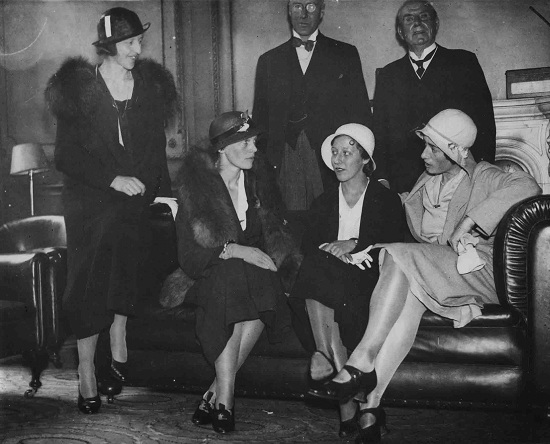
She regularly competed in the King's Cup - coming 3rd in 1928 - and was a guest at Amelia Earhart's reception at the Royal Aero Club in May 1932.
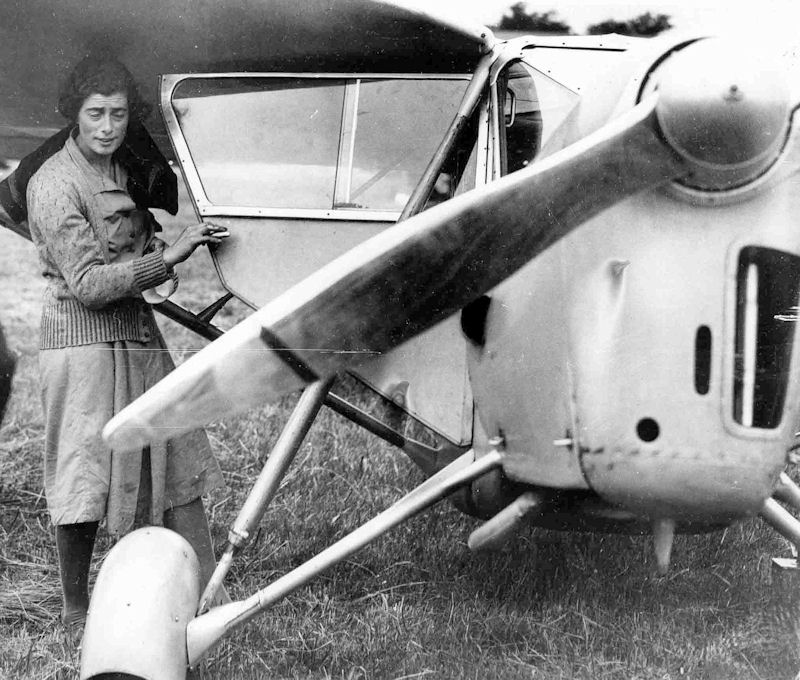
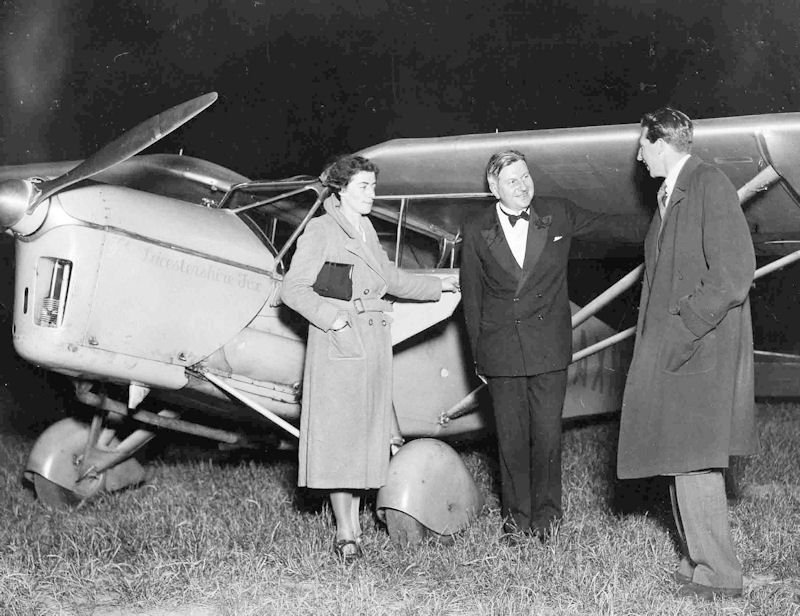
She was personal pilot to Leicestershire M.P. Lyndsey Everard from February 1931 - they are seen here with Nigel Norman.
And then, suddenly, on 13 January 1933, she was dead - not in an air crash, but as a result of a cold which rapidly worsened into pneumonia. Only few days before, in conversation with a friend, she had mentioned that her mother had died from influenza in 1918. "The deaths of both mother and daughter occurred with the same suddenness."
They are buried together in Hinton Parva: see http://www.earlyaviators.com/espoone5.htm
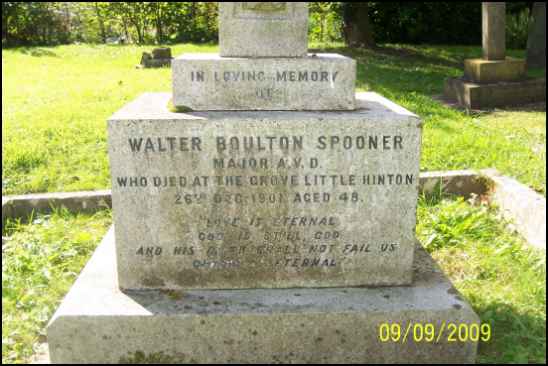
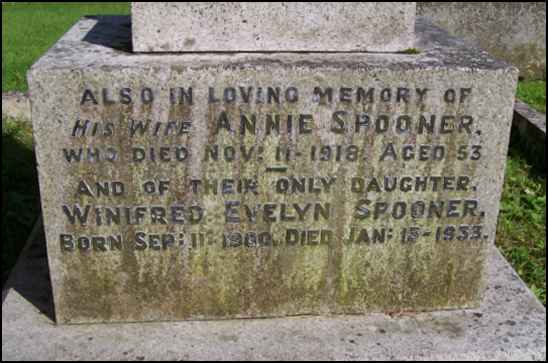
She left £1,357 0s 8d, and her brother, Capt. Frank Vivian Spooner, Indian Army (retd) was appointed administrator. She hadn't got round to writing a will.
There is a scholarship in her memory at Sherborne School for Girls.
"In the passing of Winifred Spooner the world has lost a great woman... she stood out as a woman of indomitable courage".
Winifred owned:
a 1926 DH.60 Moth (G-EBOT),
a 1928 DH.60G Gipsy Moth (G-AAAL, which she sold to Elise Battye);
a 1930 Desoutter IID (G-ABCU - this is the aeroplane she and E.C.T. Edwards ditched in the sea off Naples in December 1930), and later
a 1932 Breda 33 (G-ABXK), which was sold in Italy just 3 months before her death.
Winifred's brother Tony was chief flying instructor at the Montreal Flying Club in 1931. He was killed in March 1935 in Egypt when piloting a D.H. 84 Dragon, SU-ABI belonging to Misr Airwork, when it was caught up in a sandstorm and both engines failed.
-
Stack, Thomas Neville
Capt Thomas Neville Stack 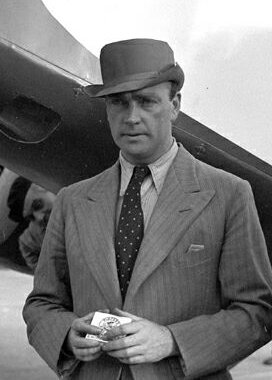 1934, aged 38
1934, aged 38
RAeC [0312-0087]
b. 1 April 1896; universally known as 'Stacko'
RFC in WWI, then became a familiar figure in aviation circles during the 1920s - in 1926 he and Bernard Leete made the first flight from England to India in two DH. Moths, one of several record-breaking flights.
He and J R Chaplin tried to fly to Australia and back in 1931, but had to turn back at Constantinople, Turkey, with carburettor trouble; later in the year the same pair attempted a flight to India and back, but again turned back with mechanical problems.
He was appointed 'Air Superintendent' of Iraq Airwork Ltd in 1933, and flew their first machine (a Spartan Cruiser) there via Cairo in 1933. Shortly afterwards, he flew 2 doctors and a nurse out to India, to perform an urgent operation on a Nepalese princess.
Late 1933 found him testing the Airspeed Courier - which is probably where he met Sydney Turner - and was widely expected to fly it in the MacRobertson Race. A month before the race, he broke (his own) London-Copenhagen record in a Miles Hawk, which is perhaps why he was too busy to inspect the Viceroy properly....
He turned up for the MacRobertson Race looking very tired and drawn - Alan Goodfellow described him as looking 'over-trained, physically', and Neville Shute Norway said he was "an exhausted and a worried man".
Shortly after the race, he was appointed Air Superintendent and Manager of Hillman's Airways; after that became part of British Airways he spent time in Turkey, advising them on civil aviation.
He was killed when run over by a lorry in Karachi, India on 22nd February 1949, aged 52. At first, the Karachi Police said he had committed suicide but, while agreeing that he was 'on the verge of a nervous breakdown', the inquiry decided that the cause of death was actually an aneurism of the aorta, and he would have died anyway.
Neville was "always very good company. He was never happier than when singing a song and strumming on his banjo."
-
Stammers, Eric Ernest
Mr Eric Ernest Stammers Reading Aero Club Member; a solicitor
d. 1972
-
Summers, Joseph
F/O Joseph 'Mutt' Summers 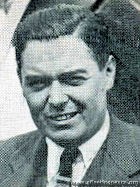 1930, aged 26
1930, aged 26'Mutt' Summers, chief test pilot for Vickers and Supermarine. Flew the Spitfire prototype on its first flight. Called 'Mutt' because he liked to pee on or near his aeroplane before taking off; is that too much detail?
Still has the most flying hours of any test pilot in the world.
d. 1954.
-
Trench, Charles Frederick Le Poer
Flt-Lt Charles Frederick Le Poer Trench 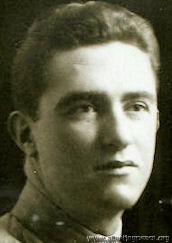
photo: 1917, when 2nd Lieut in the RFC, aged 22
An Australian who was a SPAD pilot in WWI; died in Sydney in 1974. -
Uwins, Cyril Frank
Mr Cyril Frank 'Papa' Uwins OBE 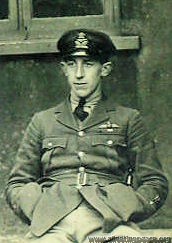
1916, when a 2nd Lieutenant, London Regiment, aged 20
.jpg)
in 1954, elected vice-President of the Society of British Aircraft Manufacturers
The "rather withdrawn", chief test pilot for Bristol Aircraft, and their Assistant Managing Director after 1947; President of SBAC in 1956; died 1972
was, in fact, "very good at high-flying" and broke the world's height record by climbing to 43,976ft in 1932
-
Warwick, Guy Neville
Mr Guy Neville Warwick 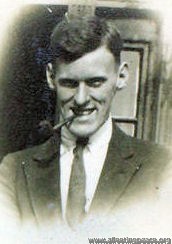 1925, aged 27
1925, aged 27A barrister from Harpenden, Hertfordshire.

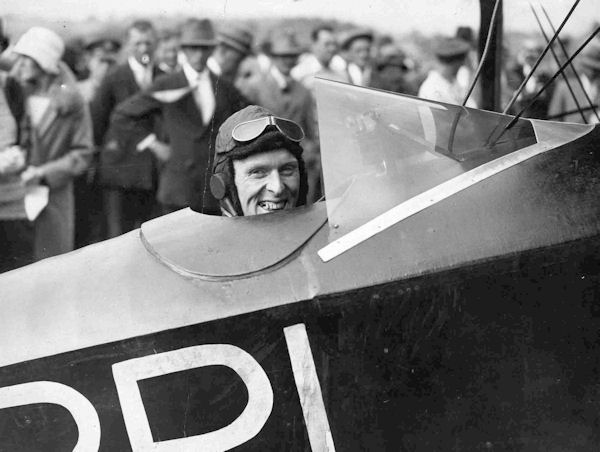 1928
1928In June 2004, Air Crash Investigation and Archaeology (ACIA) reported that 'the remains of ANEC Missel Thrush, G-EBPI, have been found on Broad Law, near St. Mary's Loch in the Scottish Borders.
The aircraft, a competitor in the King's Cup Air Race, crashed in cloud on 20th July 1928 during the Newcastle to Glasgow leg of the race. The pilot, Mr Guy Neville Warwick, was sadly killed.
ACIA members Jim Corbett, Scott McIntosh and Alan Hudson discovered the fragmented remains after a long search on the southern slopes of the mountain, eventually finding the fragments in a stream below the reported crash location. Reports that the engine remained on the mountain proved unfounded."
 A wheel from the aircraft - Museum of Flight
A wheel from the aircraft - Museum of Flight -
Webster, Sidney Norman
Flt-Lt Sidney Norman Webster 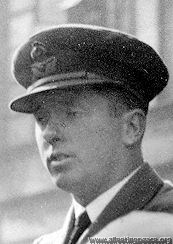
'Pebbler' Webster, from Walsall.
1927 Schneider Cup winner; later Air Vice Marshall; died 1984
-
Whitehead, R A
Mr R A Whitehead ?? -
Wilson, Charles Benjamin
Capt Charles Benjamin Wilson MC 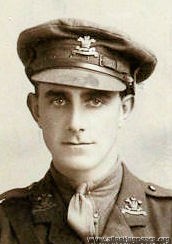 1915, when a Lieutenant in the 10th Royal Hussars, aged 30
1915, when a Lieutenant in the 10th Royal Hussars, aged 30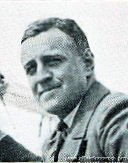 1930, aged 45
1930, aged 45born in Manchester; listed 'racing, travelling and yachting' as his recreations; High Sherriff of Norfolk in 1942; died 1957
-
Yeatman, Harry Morgan
Mr Harry Morgan Yeatman b. 21 Jul 1895 in London, the son of Harry Oswald Yeatman, a wine shipper (the Yeatman Family were partners in Taylor's Port) and Benedicta
Wiltshire Regiment in WWI; then RFC/RAF 34, 9, 48 and 52 squadrons
21.12.16: wounded [7100 BE2e] Hit hangar and nosedived to ground landing at 4Sq after observer inj in eye on artly obs.
11.07.17: Ok [A4610 RE8] Run into by machine of 7Sq after landing from special duty. Lt HM Yeatman Ok/Maj Mitchell Ok
Transferred to the unemployed list as Captain, 24 Feb 1919.
m. 1929 Sylvia Marguerite [Giraud Wright]; profession: "Aeronaut"
Elected member of RAeC, 1929
d. 30 May 1968; buried All Souls Churchyard, Harfordbridge, Hants
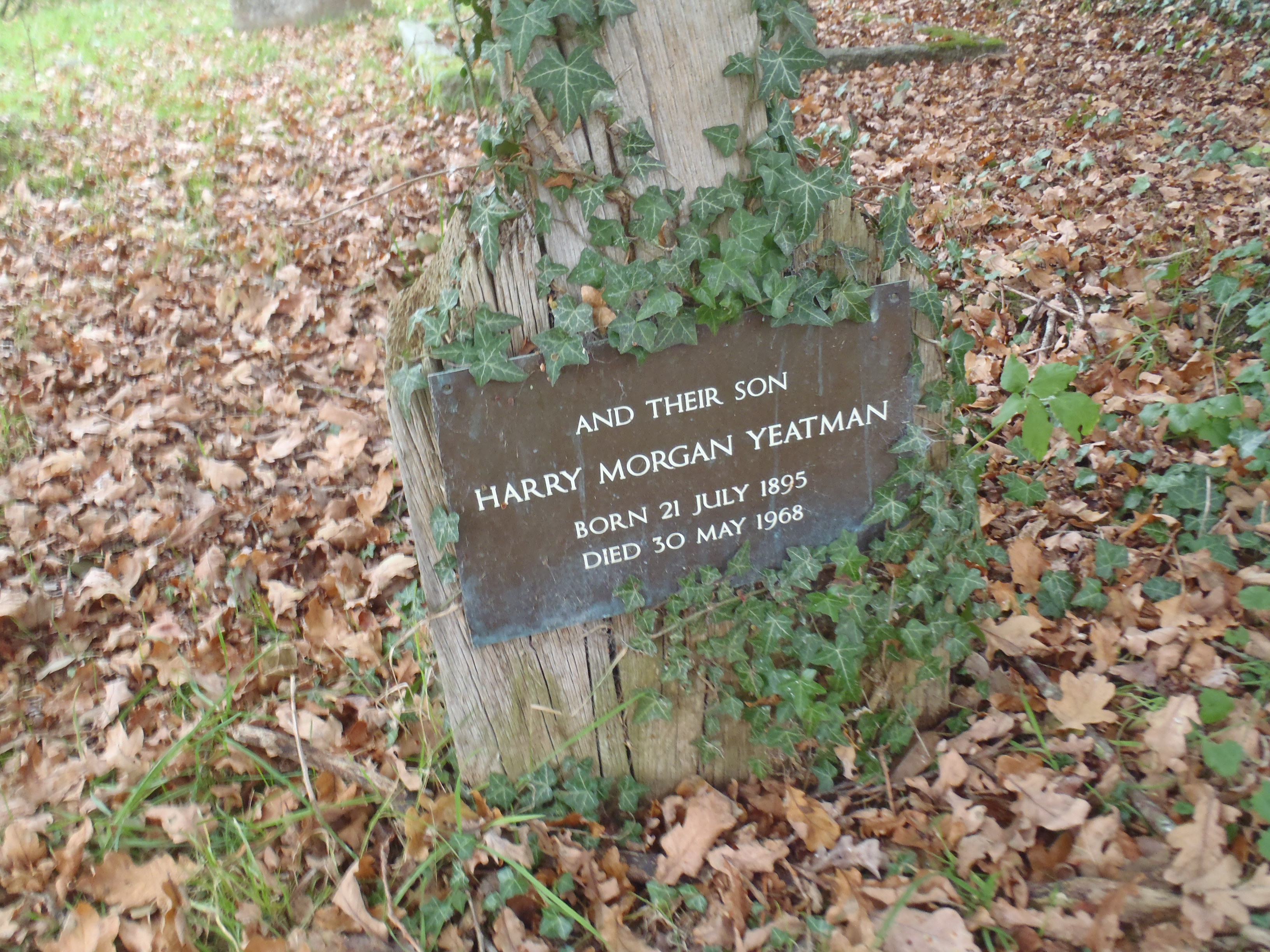
Page 2 of 2

